Assessing the Crashworthiness Analysis on Frontal and Corner Impacts of Vehicle on Street Poles Using FEA
Abstract
1. Introduction
- Assessing the damage of both the street pole and the vehicle during impact. The geometry and material definition of the street poles are comprehensively defined in detail to provide the results and compare them to accidents alongside experimental and numerical data of this nature.
- Analyzing whether a frontal or corner collision will cause higher damage on the street pole, the car, and even possibly both through qualitative FEA results.
2. Literature Review
2.1. Constitutive Equations
2.2. Literature Analysis of Experimental Data
2.3. Literature Analysis of Simulation Data
3. Methodology
3.1. D Model
3.2. FEA Model
3.3. Assumptions Considered for the FEA Model
4. Results
4.1. Impact Analysis at Speed of 12 m·s−1 (43 km/h)
4.2. Impact Analysis at Speed of 17 m·s−1 (63 km/h)
4.3. Impact Analysis at Speed of 22 m·s−1 (80 km/h)
5. Conclusions
Author Contributions
Funding
Institutional Review Board Statement
Informed Consent Statement
Data Availability Statement
Conflicts of Interest
References
- Federal Competitiveness and Statistics Centre. Traffic Accidents by Emirate and Cause of Accident, Bayanat. 2018. Available online: http://data.bayanat.ae/en_GB/dataset/traffic-accidents-by-emirate-and-cause-of-accident/resource/cdfb92d6-f9d2-479c-96d5-18ef09b222b5 (accessed on 12 October 2022).
- Gopalakrishna, H.D.; Panda, P.; Jois, P. Crashworthiness of Automobile in a Vehicle-To-Pole Crash Simulation. Int. J. Automob. Eng. Res. Dev. 2014, 4, 1–10. [Google Scholar]
- Long, K.; Gao, Z.; Yuan, Q.; Xiang, W.; Hao, W. Safety evaluation for roadside crashes by vehicle-object collision simulation. Adv. Mech. Eng. 2018, 10, 1–12. [Google Scholar] [CrossRef]
- Long, C.R.; Chung Kim Yuen, S.; Nurick, G.N. Analysis of a car door subjected to side pole impact. Lat. Am. J. Solids Struct. 2019, 16, 1–17. [Google Scholar] [CrossRef]
- Passino, B. Fix It: Who Pays Up for Damaged Poles? Kenosha News. Available online: https://www.kenoshanews.com/news/fix-it-who-pays-up-for-damaged-poles/article_827b0977-0573-51bd-94a7-fea77c3b636c.html (accessed on 9 July 2015).
- Frank, M. Anatomy of a High-Speed Car Crash, Road & Track. 2013. Available online: https://www.roadandtrack.com/car-culture/a4916/features-web-originals-anatomy-of-a-high-speed-car-crash (accessed on 12 October 2022).
- Deb, A. Crashworthiness Design Issues for Lightweight Vehicles. In Materials, Design and Manufacturing for Lightweight Vehicles; Elsevier: Amsterdam, The Netherlands, 2021. [Google Scholar] [CrossRef]
- Sun, G.; Deng, M.; Zheng, G.; Li, Q. Design for cost performance of crashworthy structures made of high strength steel. Thin Walled Struct. 2019, 138, 458–472. [Google Scholar] [CrossRef]
- Li, Q.; Li, E.; Chen, T.; Wu, L.; Wang, G.; He, Z. Improve the frontal crashworthiness of vehicle through the design of front rail. Thin Walled Struct. 2021, 162, 107588. [Google Scholar] [CrossRef]
- Ispas, N.; Nastasoiu, M. Analysis of car’s frontal collision against pole. IOP Conf. Ser. Mater. Sci. Eng. 2017, 252, 012012. [Google Scholar] [CrossRef]
- Miscia, G.; Rotondella, V.; Baldini, A.; Bertocchi, E.; D’Agostino, L. Aluminum Structures in Automotive: Experimental and Numerical; Imece2015-51724; ASME: New York, NY, USA, 2015; pp. 1–10. [Google Scholar]
- Abdel-Nasser, Y.A. Frontal crash simulation of vehicles against lighting columns using FEM. Int. J. Traffic Transp. Eng. 2013, 52, 101–105. [Google Scholar] [CrossRef]
- Baranowski, P.; Damaziak, K. Numerical simulation of vehicle-lighting pole crash tests: Parametric study of factors influencing predicted occupant safety levels. Materials 2021, 14, 2822. [Google Scholar] [CrossRef] [PubMed]
- Elmarakbi, A.; Sennah, K.; Samaan, M.; Siriya, P. Crashworthiness of motor vehicle and traffic light pole in frontal collisions. J. Transp. Eng. 2006, 132, 722–733. [Google Scholar] [CrossRef]
- Wang, D.; Dong, G.; Zhang, J.; Huang, S. Car side structure crashworthiness in pole and moving deformable barrier side impacts. Tsinghua Sci. Technol. 2006, 11, 725–730. [Google Scholar] [CrossRef]
- Samaan, M.; Sennah, K. Crashworthiness of motor vehicle and luminaire support infrontal impact. Adv. Steel Struct. 2002, 2, 963–970. [Google Scholar] [CrossRef]
- Systèmes, D. Damage and Failure for Ductile Metals. SIMULIA User Assistance. 2022. Available online: https://help.3ds.com/2022/english/dssimulia_established/SIMACAEMATRefMap/simamat-c-damageinitductile.htm?contextscope=all&id=f06a4095538549bd805b6119b682e42d#simamat-c-damageinitductile-t-DamageInitiationCriteriaForFractureOfMetals-sma-topic1 (accessed on 12 October 2022).
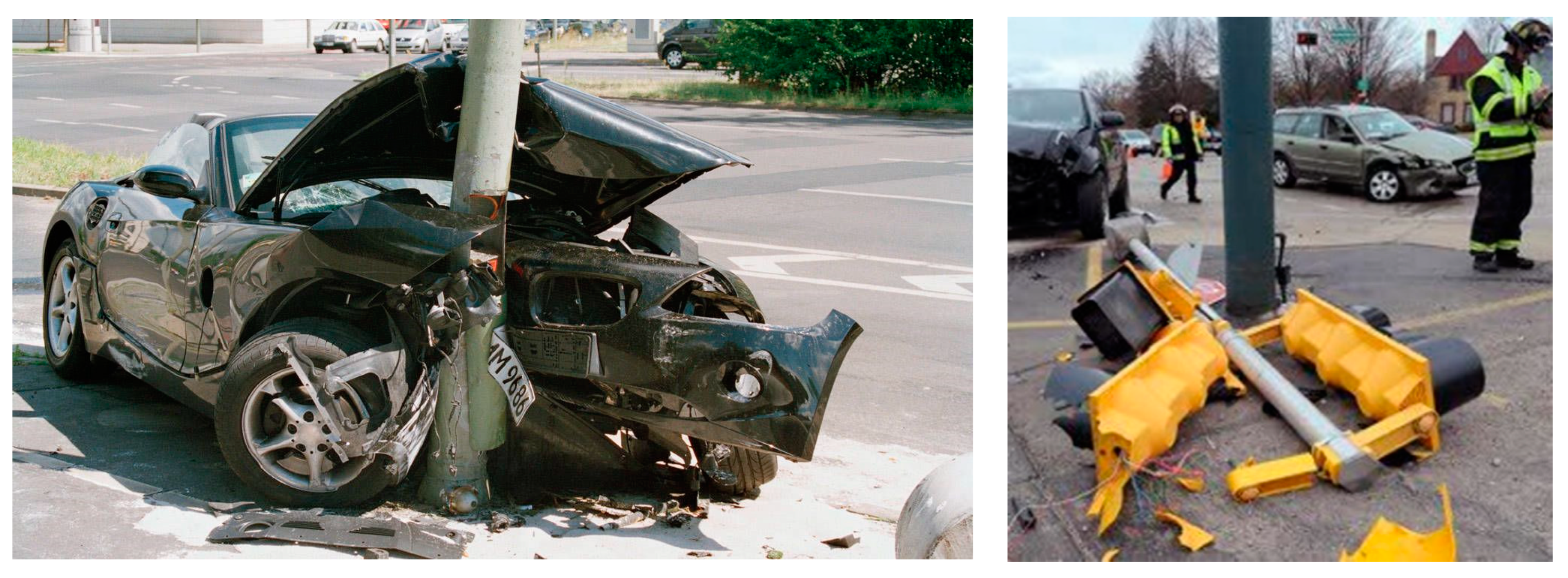



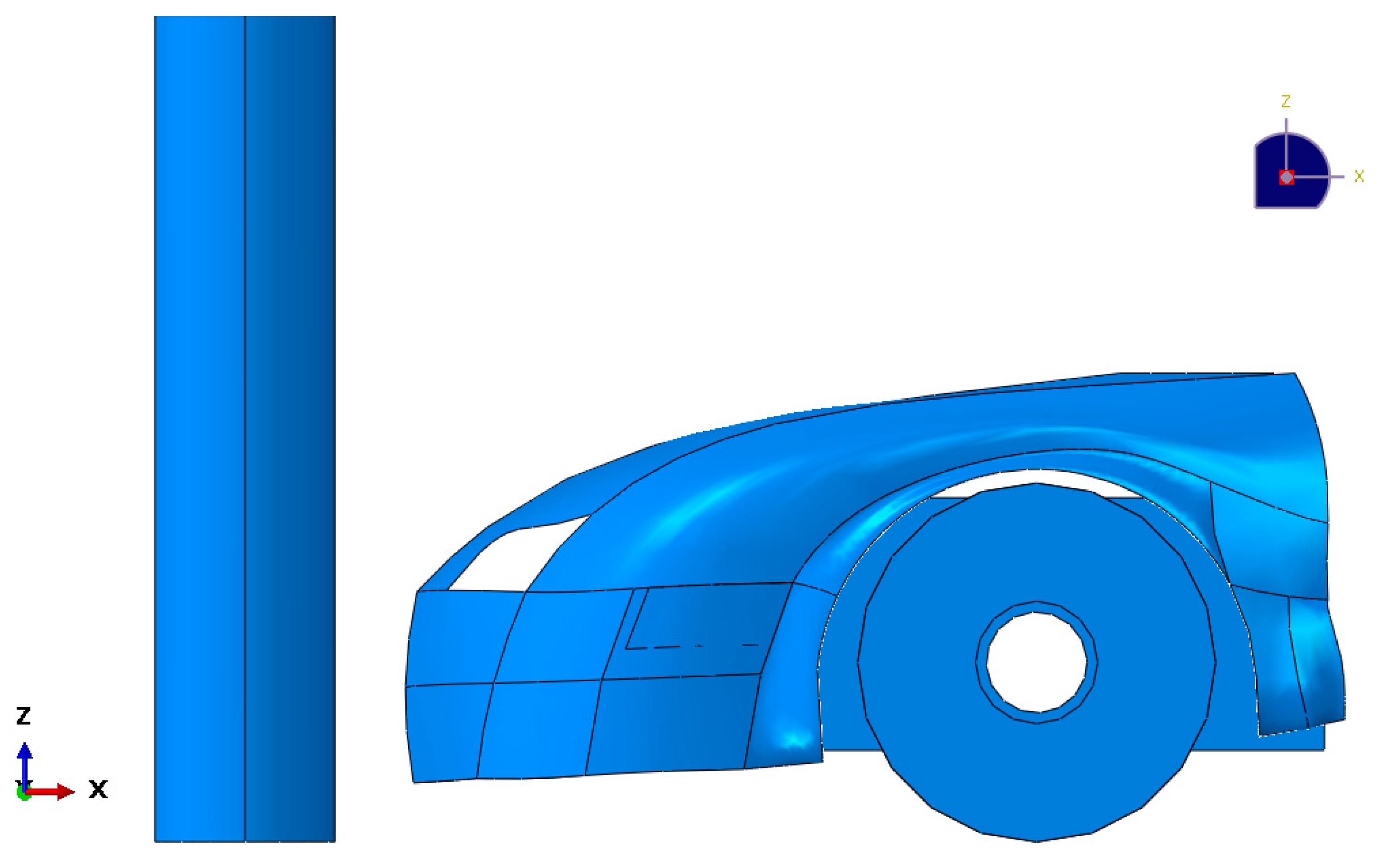
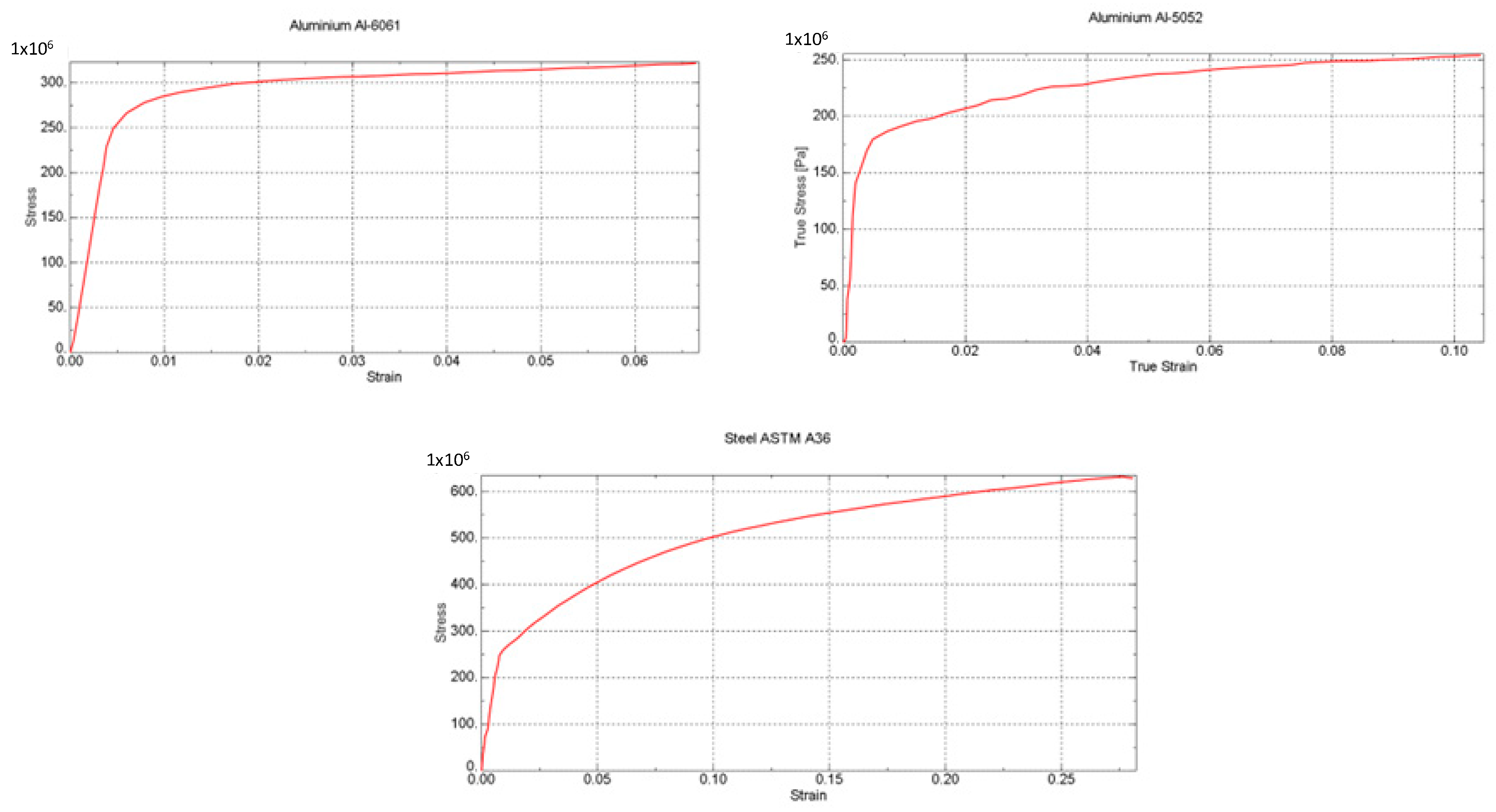

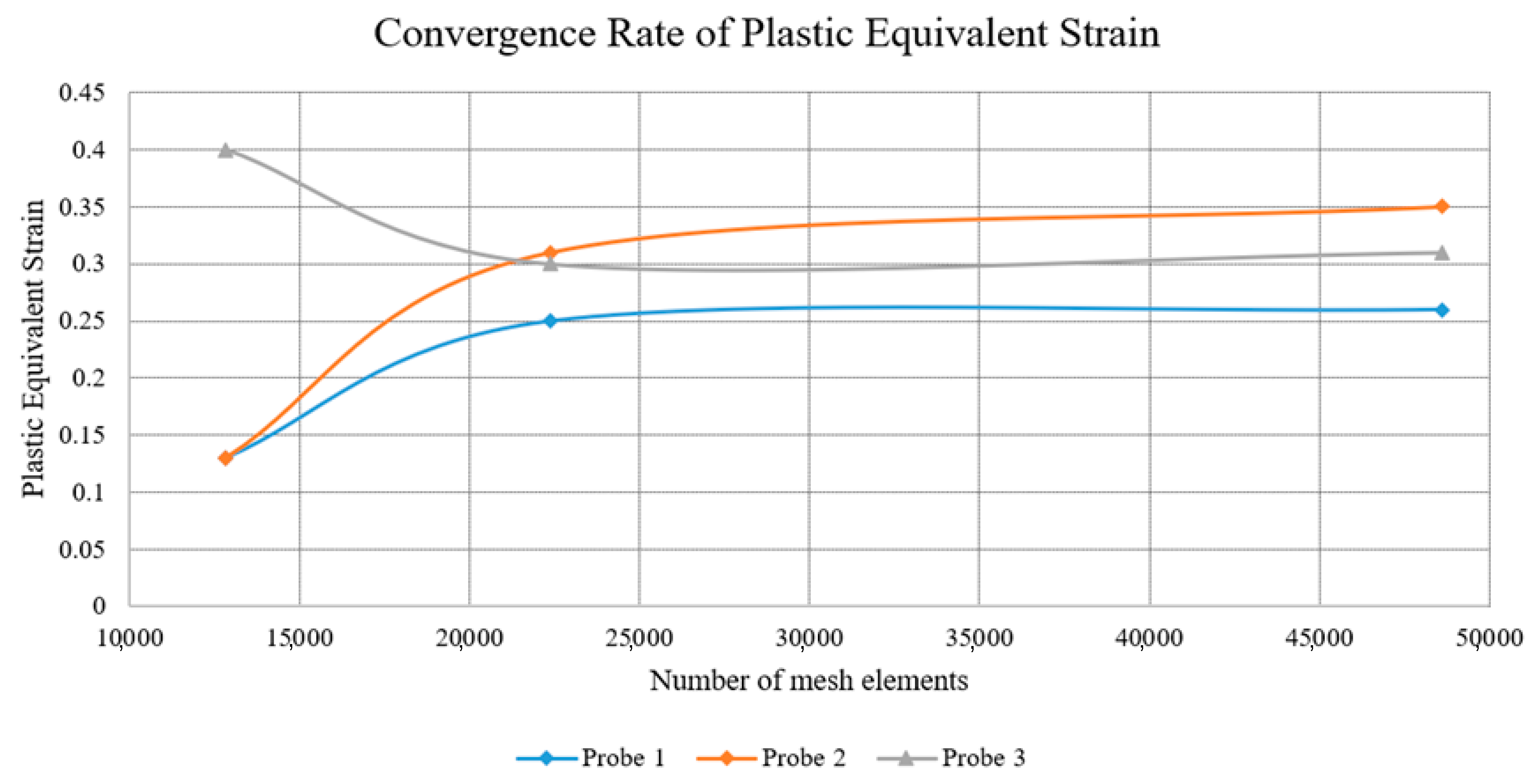
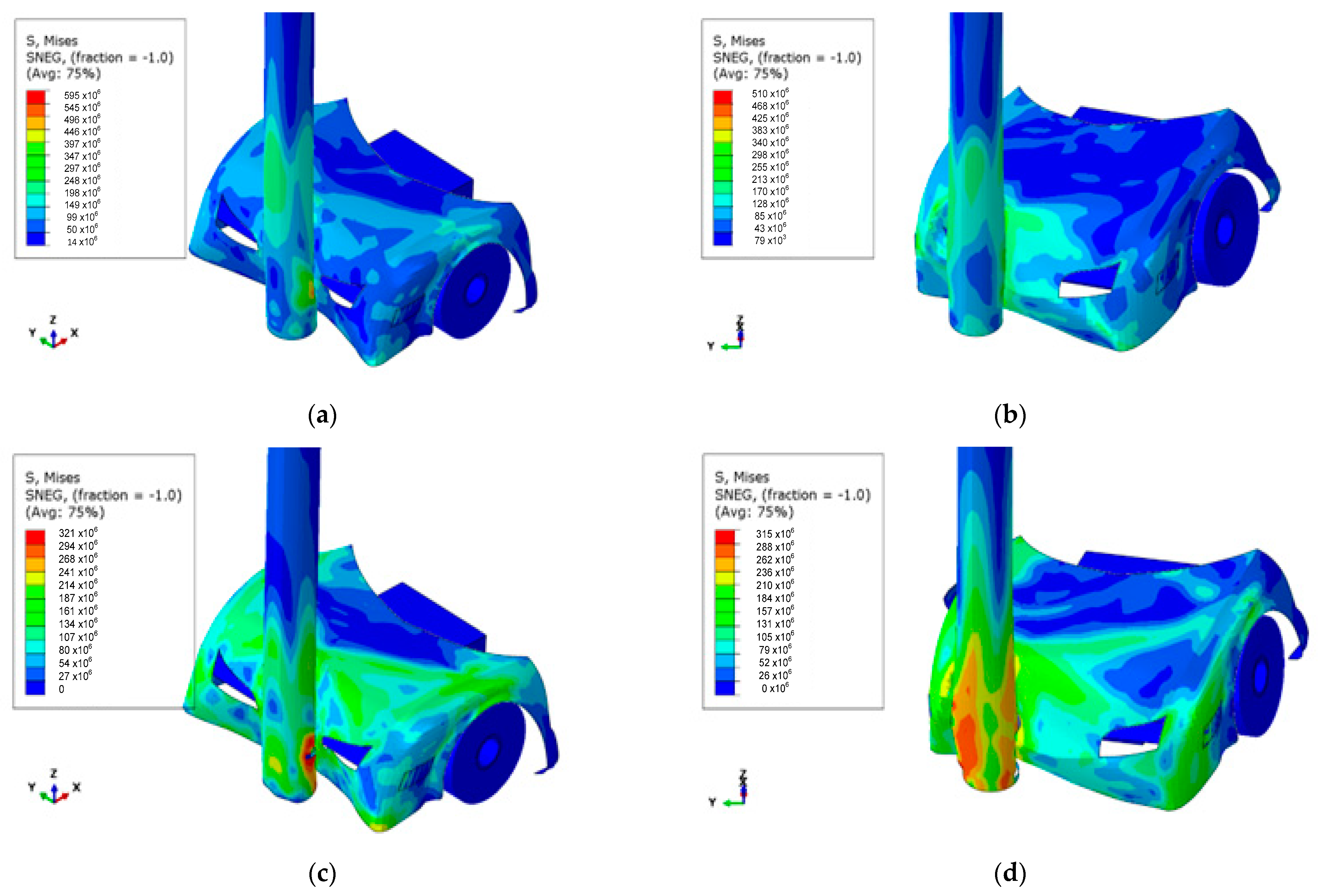


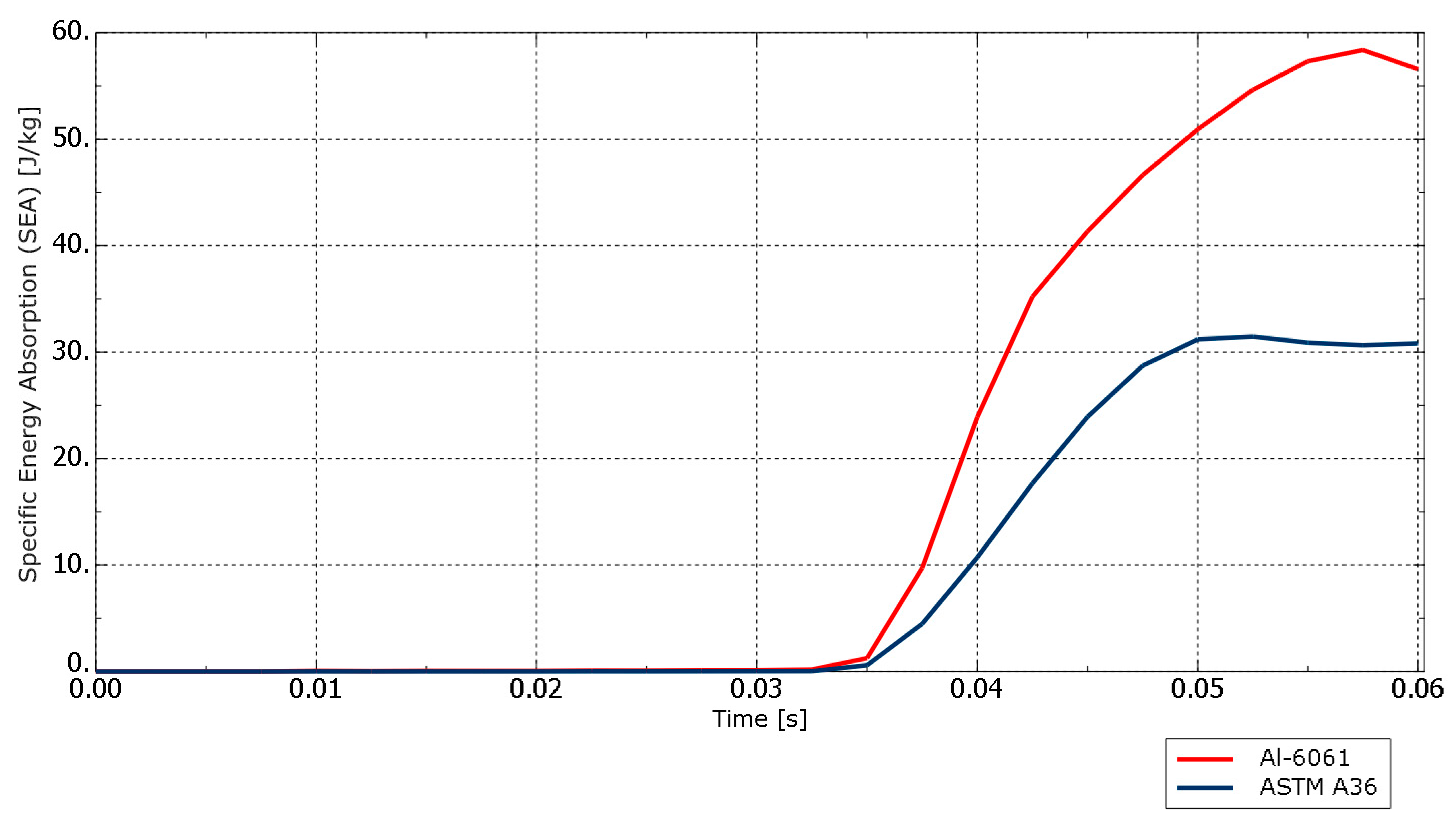



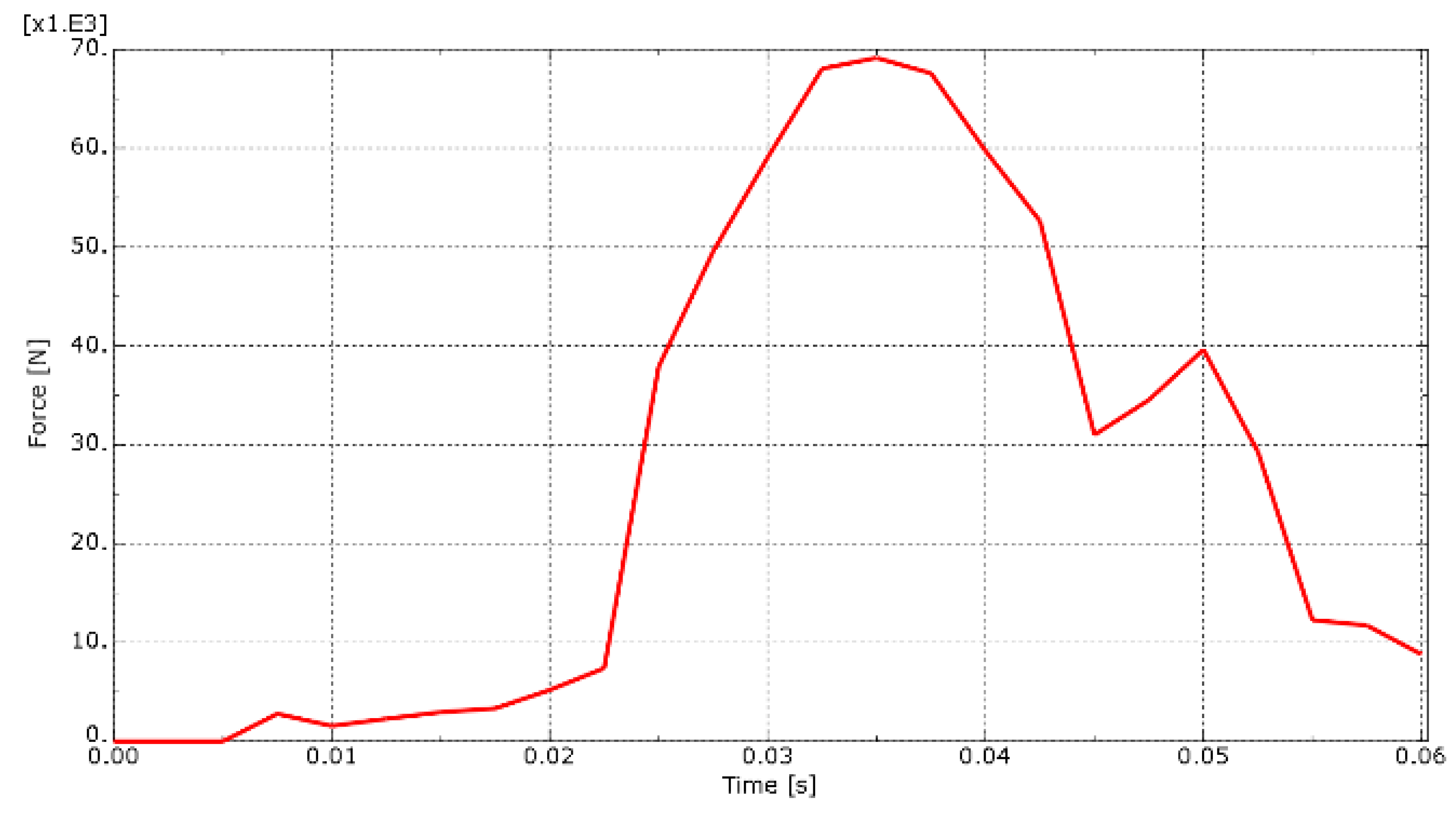
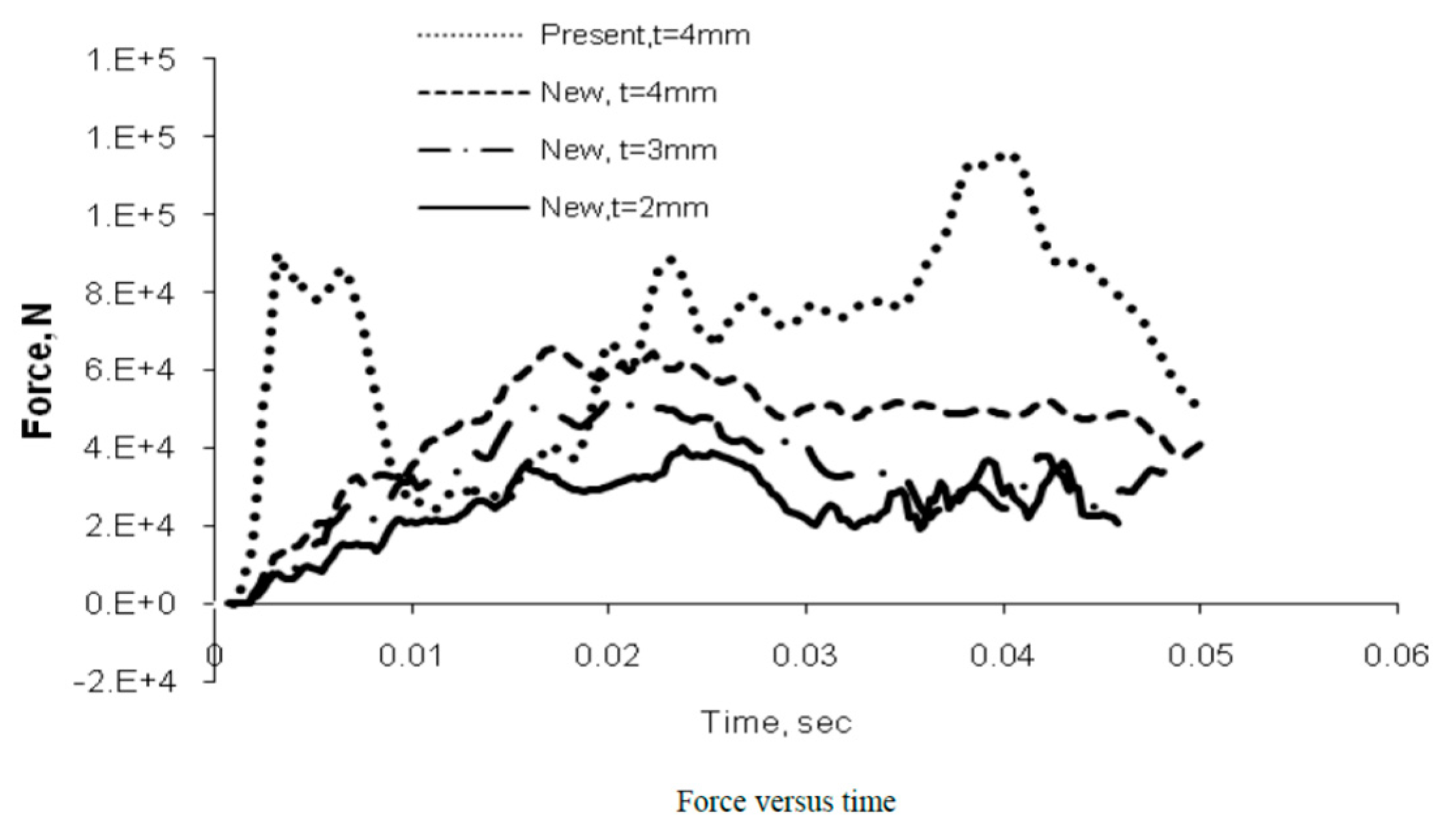
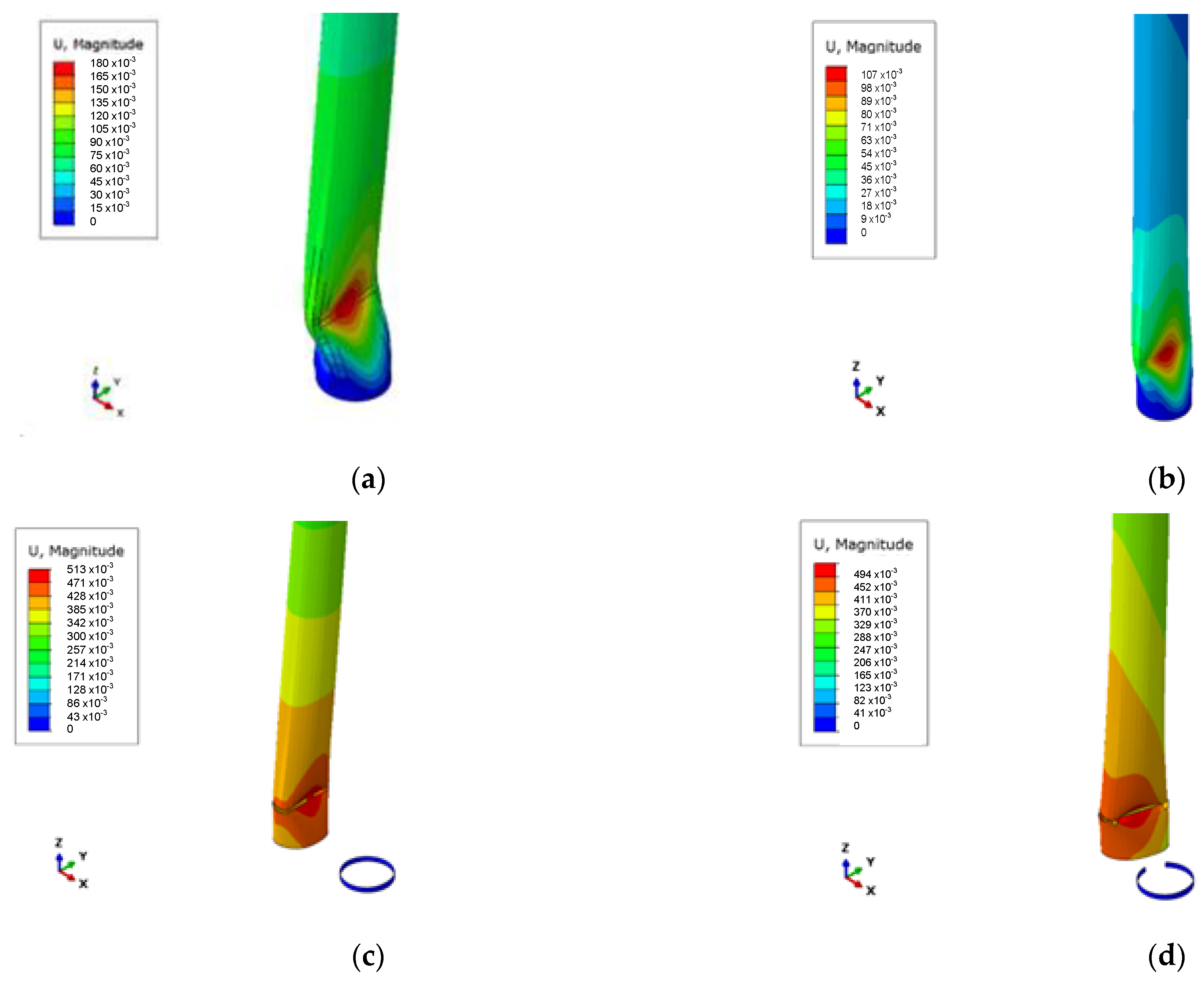

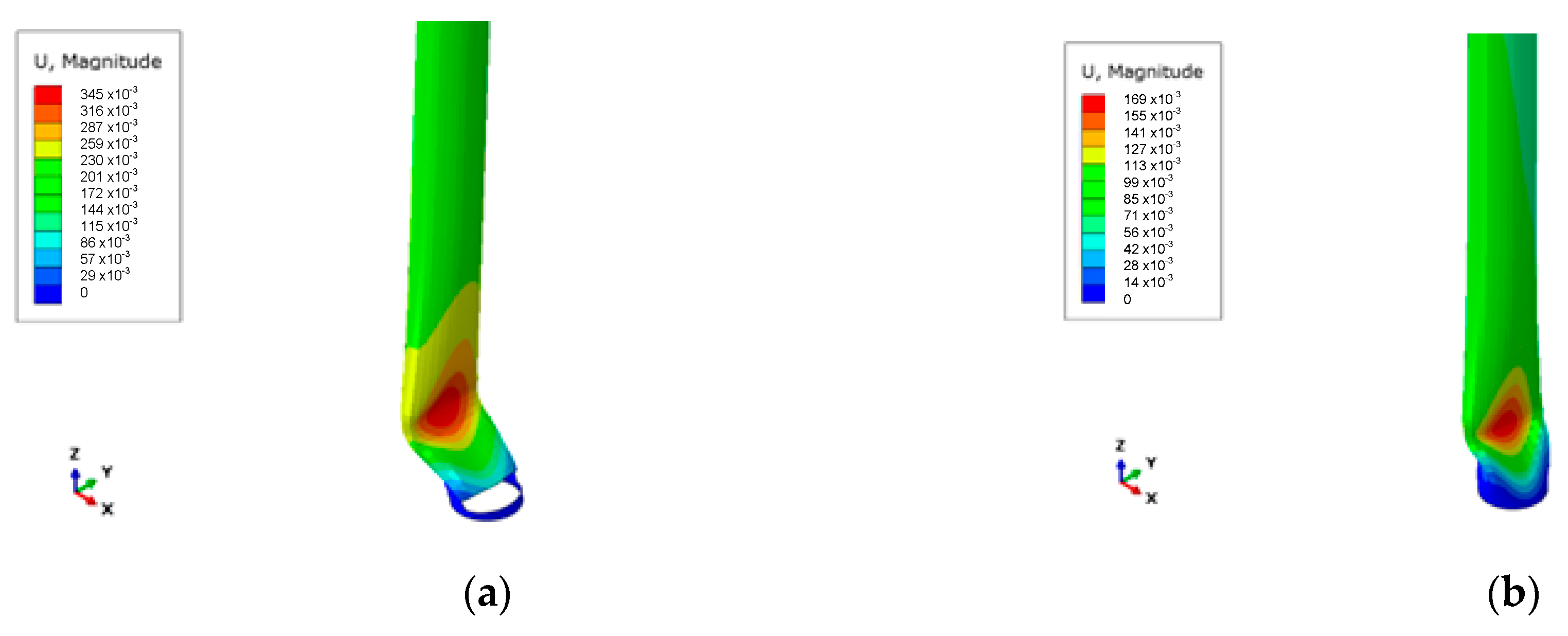
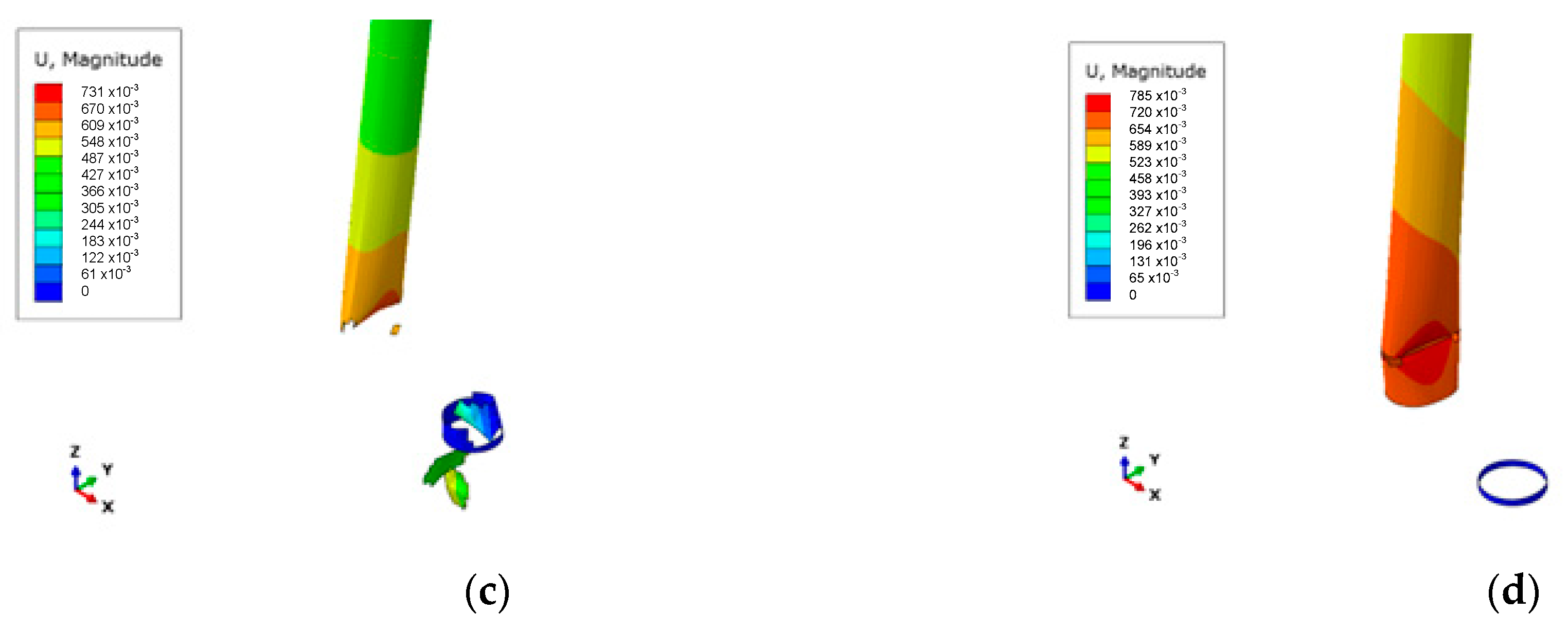


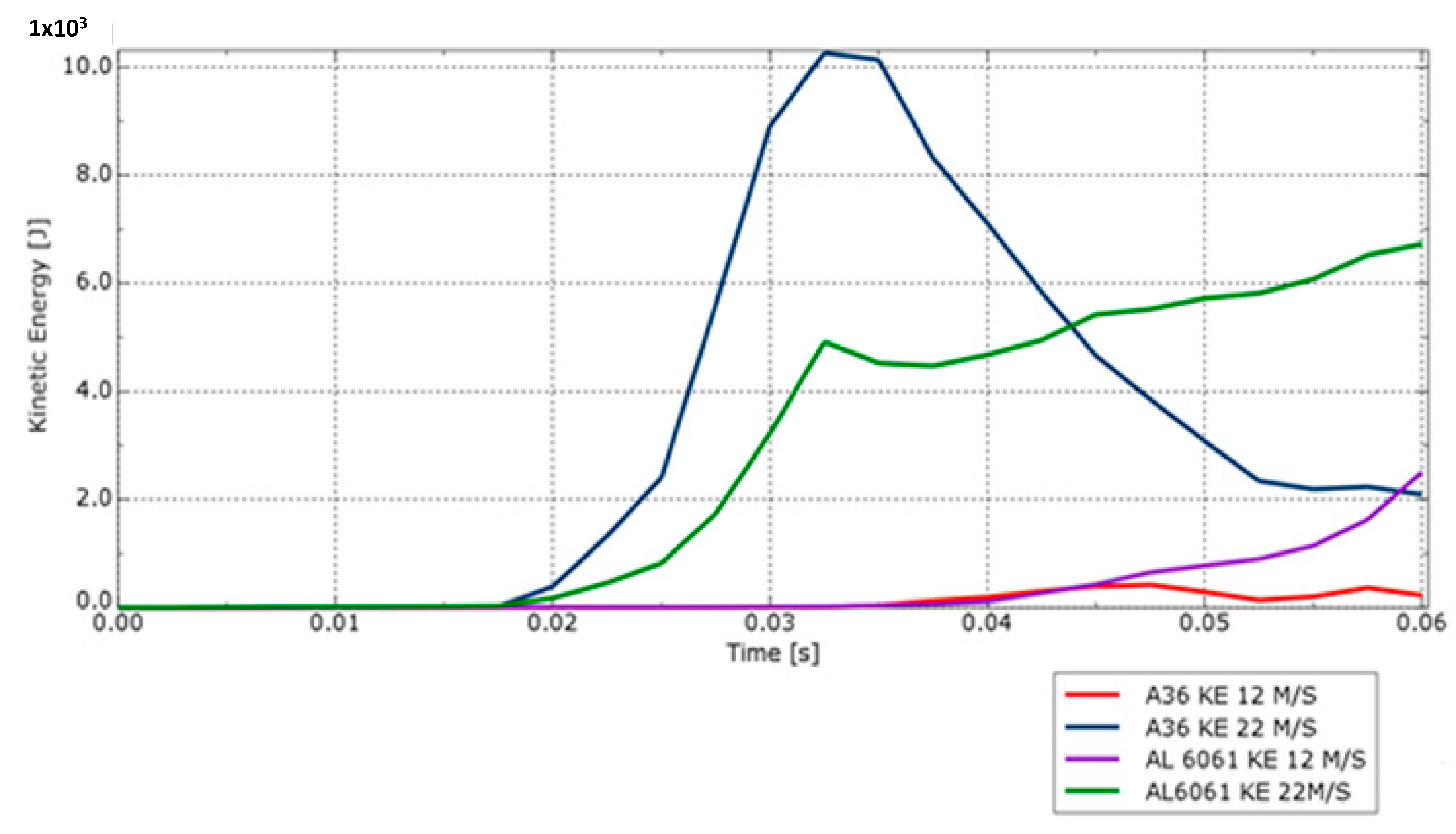
| Material | Young’s Modulus (GPa) | Poisson’s Ratio | Yield Stress (MPa) | Density (kgm−3) |
|---|---|---|---|---|
| Aluminum-5052 | 68.9 | 0.33 | 140 | 2690 |
| Aluminum-6061 | 69.5 | 0.33 | 220 | 2780 |
| Steel ASTM A36 | 210 | 0.29 | 247.5 | 7869 |
| Material | Fracture Strain | Displacement after Fracture (m) |
|---|---|---|
| Aluminum-5052 | 0.105 | 0.002625 |
| Aluminum-6061 | 0.061 | 0.001525 |
| Steel ASTM A36 | 0.24 | 0.006 |
Publisher’s Note: MDPI stays neutral with regard to jurisdictional claims in published maps and institutional affiliations. |
© 2022 by the authors. Licensee MDPI, Basel, Switzerland. This article is an open access article distributed under the terms and conditions of the Creative Commons Attribution (CC BY) license (https://creativecommons.org/licenses/by/4.0/).
Share and Cite
Alardhi, M.; Sequeira, R.; Fahed, M.; Alrajhi, J.; Alkhulaifi, K. Assessing the Crashworthiness Analysis on Frontal and Corner Impacts of Vehicle on Street Poles Using FEA. Appl. Sci. 2022, 12, 12287. https://doi.org/10.3390/app122312287
Alardhi M, Sequeira R, Fahed M, Alrajhi J, Alkhulaifi K. Assessing the Crashworthiness Analysis on Frontal and Corner Impacts of Vehicle on Street Poles Using FEA. Applied Sciences. 2022; 12(23):12287. https://doi.org/10.3390/app122312287
Chicago/Turabian StyleAlardhi, Mohsen, Rahul Sequeira, Melad Fahed, Jasem Alrajhi, and Khalid Alkhulaifi. 2022. "Assessing the Crashworthiness Analysis on Frontal and Corner Impacts of Vehicle on Street Poles Using FEA" Applied Sciences 12, no. 23: 12287. https://doi.org/10.3390/app122312287
APA StyleAlardhi, M., Sequeira, R., Fahed, M., Alrajhi, J., & Alkhulaifi, K. (2022). Assessing the Crashworthiness Analysis on Frontal and Corner Impacts of Vehicle on Street Poles Using FEA. Applied Sciences, 12(23), 12287. https://doi.org/10.3390/app122312287




